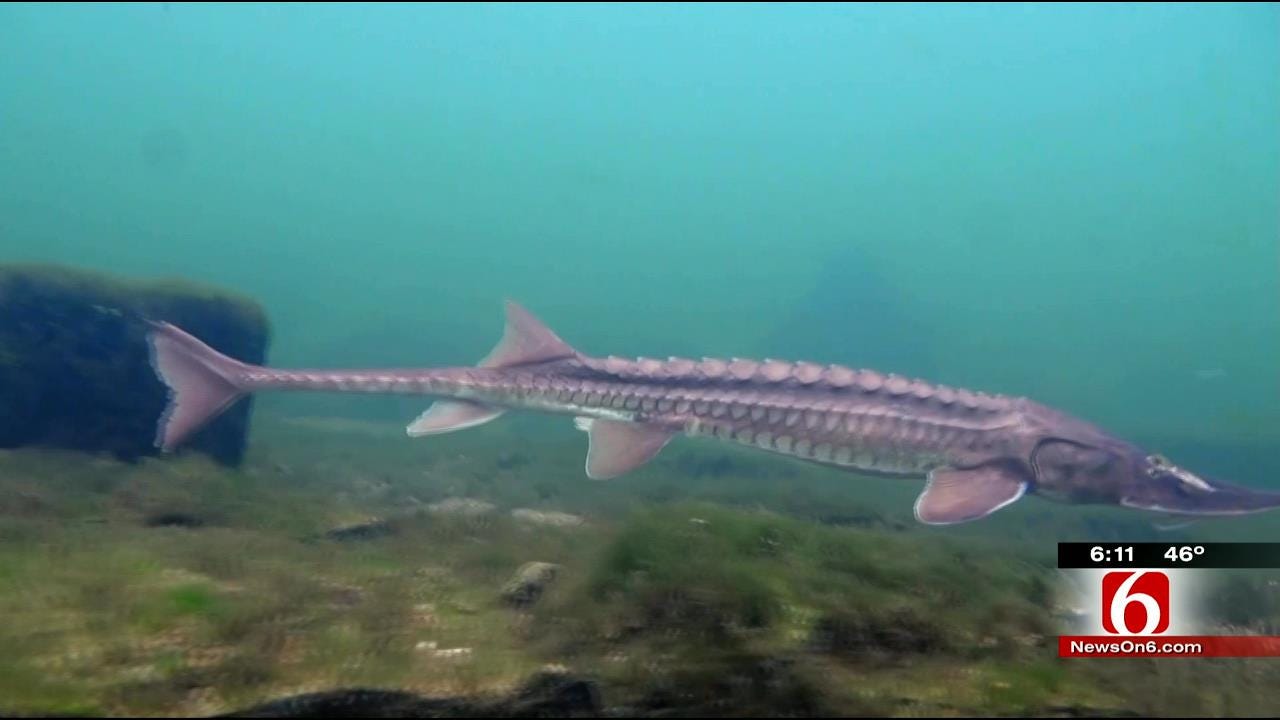Tulsa Biologist Studying, Tracking Prehistoric Fish
The shovelnose sturgeon is considered one of Oklahoma's oldest, and weirdest fish, but there's still a lot to learn about what they need to survive.Monday, December 15th 2014, 7:43 pm
The shovelnose sturgeon is considered one of Oklahoma's oldest, and weirdest fish, but there's still a lot to learn about what they need to survive.
Right now, the state is studying the prehistoric fish and a particular surgery is helping biologists track the species.
The shovelnose sturgeon practically lives in our backyard - right in Tulsa's stretch of the Arkansas River - but biologists fear the fish is on the brink of being wiped out in Oklahoma, which is why their new study is so important.
4/2/2014 Related Story: Unusual Fish Discovered In Arkansas River
Fisheries biologist Josh Johnston said the shovelnose sturgeon has been around about 100 million years; and while they were once common in the state, they've been on steady decline in the past five decades.
“We've noticed, all over the United States, the species that are going extinct are these species that require a drift time, and the reason why is we've impounded systems,” Johnston said.
A fisherman's catch and an underwater survey from a few winter's back proved shovelnose sturgeon are still using Oklahoma's arm of the Arkansas River.
4/11/2014 Related Story: Fisherman Reels In Surprise Catch In Arkansas River
While Johnston said he knows the sturgeon is a migratory fish, little is known about all the other things they need to survive in the state.
“We just want to see what their needs are, habitat wise and also space wise,” he said.
It wasn't easy, but Johnston and his team caught the 25 sturgeon they needed for a study, then, a veterinarian placed ultrasonic tags in the abdomen of each fish and stitched them back up.
9/24/2014 Related Story: Oklahoma Wildlife Biologists Track Dwindling Number Of Prehistoric Fish
“I've done paddlefish and striped bass and stuff for them and this is like leather,” Veterinarian, Dr. Gene Parker said.
The tags work sort of like a Pike Pass - the fish can be tracked by swimming past an underwater receiver, or Johnston can pick up a signal using a hydrophone.
By tracking the movement, Johnston said it could provide the department with information that could help save the species from extinction in Oklahoma.
"If we could determine if they're spawning and where they're spawning in this river system, then one day we can look at that larval drift and say, 'Ya know, in periods of normal flow, a spring of normal flow, we know this shovelnose sturgeon needs this far, and if we impound this any farther, that's it for the shovelnose sturgeon,'" Johnston said.
The fish were monitored in an aquarium for five days then released in the exact spots they were caught.
Johnston said the sturgeon probably won't move much until the spring, when they make a spawning run up the river.
The study will wrap up shortly after the spawn.
More Like This
December 15th, 2014
April 15th, 2024
April 12th, 2024
March 14th, 2024
Top Headlines
April 25th, 2024
April 25th, 2024
April 25th, 2024









